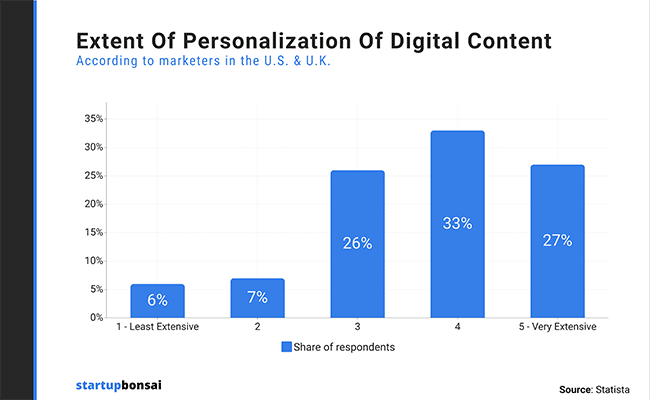
Time Matters: What Real-Time Analytics Mean for Business Intelligence
In business, now more than ever, data is king. With the right information, we can better understand our audience, improve workflows, and boost performance. If you’re running a business and not leveraging data, you’ll probably get left in the dust.
There are many examples of how data is transforming businesses. You don’t have to look far to see how data-powered marketing is reinventing the ways organizations connect with their audience. This means more scope for personalization and the ability to create better customer profiles.
Though collecting data is no longer enough to stay ahead of the competition. Modern businesses are constantly reinventing themselves. To keep up, you need information, and you need it fast. This is where real-time analytics comes in.
But what is real-time analytics, and how can it improve your business intelligence?
What is Real-Time Analytics?
To answer this question, let’s start by looking at the term ‘analytics’. Your business might gather lots of data, but without analytics, this doesn’t mean a great deal. Gathering information is all well and good, but you also need to be able to understand it.
This is where analytics comes in. Modern analytics tools can help you better visualize and understand your data. This will generally include reports that allow you to dig deep into your data and predict future trends.
But what is real-time analytics? Generally, when gathering data, you have to wait a period of time before you can get to insights. With real-time analytics, you see information as soon as it enters the database. It’s not hard to see why this is useful. This detailed data can be used to improve every aspect of your organization, from better customer interactions to improved relationships between departments.
If you haven’t yet started working with real-time analytics, now is a good time to catch up.
How Does it Work?

Unfortunately, real-time analytics is somewhat complicated. Firstly, you’ll need a data streaming service powerful enough to push data into your system. This can be expensive, not to mention a drain on your resources. Many businesses are unable to support constant data streaming. Instead, they opt to push data periodically instead.
Real-time analytics occur at the edge of the network. This means that it takes place near the source, decreasing delay and ensuring that data is analyzed when it reaches the warehouse.
All data analytics involves four primary components. These are listed below:
Analytics Engine: This is the heart of real-time analytics. As information is analyzed, value correction takes place, and data is streamed together.
Broker: This calculates the availability of data before it is consumed in the aggregator.
Aggregator: This is where all data is collected and prepared for streaming.
Stream Processor: The Stream Processor enables data to be pushed into the database.
Of course, to support all these operations, you’ll also need hardware and infrastructure. For this reason, opting for a cloud-based solution to manage data is a great option.
What Are the Benefits of Real-Time Analytics?
There are many benefits associated with real-time analytics. Let’s explore some of the reasons why it might be a good option for you.
Give Your Marketing a Boost

You might have noticed that marketing has become more and more personalized in recent years. Customers like experiences to be tailored to them. 52% of customers expect offers to always be personalized.
Data-driven marketing is becoming a powerful force in the business world. First-party data collection is at the forefront of enabling businesses to offer these experiences. To remain competitive, personalization is something that your business will need to tap into. By using real-time analytics, you can get a more detailed view of your customer’s behavior. This can help you better understand their wants and needs.
With a fuller picture of your customers, you can make improvements to your marketing initiatives. You even can combine this data with technology to enhance it even further, for example, use email tracking tools to improve your email marketing.
Give Your Marketing a Boost
Just as insights into customer behavior can improve your marketing, they can also enhance user experiences. With real-time analytics, you can track users’ journey on your website or app. Are there any areas that they struggled to access? Do certain pages receive less viewing time? You can use all this information to address these questions and optimize accordingly.
You could even use your collected data to power an AI virtual agent for your website. Customers prefer not to have to wait in long queues. With AI, a customer can have their queries answered immediately, saving them time and hassle..
There are many reasons why you might want to improve the user experience. Firstly, if people enjoy using your site, it will boost customer retention levels. Secondly, user experience is a major factor in Search Engine Optimization. User-friendly websites are more likely to rank higher in search results.
Of course, there are other factors to consider in making your website easy to find. Perhaps one of the most important is having the right domain. If you find your domain is already taken, try looking internationally. Domain names registration Australia is a great option.

Cybersecurity is becoming an ever-increasing concern for businesses. Cyberattacks are on the rise as is the number of threats posed to organizations. Real-time analytics helps you remain more alert of any potential problems. You can set up automated messages in case any security concerns arise.
Data gained from real-time analytics can also be used to power AI to help increase website security.
Give Your Marketing a Boost
Sometimes, data can be difficult to handle. You might have pages and pages of reports containing detailed information. In this situation, it can be difficult to know exactly where to start. With real-time analytics, you gain access to visualizations that simplify your data.
You can watch as data flows throughout your organization, giving you a better idea of where data is coming from and where it goes. With a better understanding of your data, you can make more informed decisions.
Build Better Workflows
Every business should be on top of its workflow. With the right process, your business can improve efficiency, moving like a well-oiled machine. But many organizations struggle to spot issues within their workflows, leading to poor productivity.
Real-time analytics helps you better monitor workflows. This means that you can spot issues before they exacerbate into bigger problems. Not only that, but you can automate certain processes to manage workflows more dynamically.
Of course, you may want to invest in additional technologies to improve your workflow. For example, an online phone number can help bring unified communication with colleagues.
More Confident Predictions
Spotting trends is an important part of running a business. The most successful organizations respond to and even predict future trends. Done correctly, you can latch on to the next big thing. But if you fail to respond to a trend, you might miss out on great opportunities. That’s why data should be at the heart of your decision making.
Real-time analytics allows you to predict trends with increased confidence. This is because it can be combined with AI technologies and machine learning. You’ll be able to make decisions much more quickly and cash in on new developments.
Improved Customer Support
In many ways, customer support can be a lifeline for businesses. If something isn’t right with your product or service, customer support is a chance to redeem yourself. That’s why it’s so important to get it right. Businesses continue to look for new and innovative ways to improve customer support, such as using hosted call center software.
Customers expect to see improvement from your business. This means that your current customer support should be better now than it was five years ago. Luckily, real-time analytics makes this process a lot easier. You can analyze calls as they happen, notice trends, and suggest better approaches for agents.
Everyone has had a bad experience with customer support at one time or another. Sometimes this can mean long hours sitting in queues only for a query to go unresolved. This damages customer relations and adds to a general image of incompetency. Unfortunately, some mistakes are inevitable. But it’s important to learn from them to ensure they don’t occur again.
Using real-time data integration can help with that. It allows your agents to examine customer details during a call, giving them a fuller picture of the caller. This can help give more insights and produces a higher chance of a query being resolved. It might also be a good idea to allow customers to make a toll-free call. This way, if a query isn’t resolved the first time around, a customer won’t feel cheated out of money.
What Are the Challenges of Real-time Analytics?
Storing and Handling Data
With Real-time analytics, you’ll collect large volumes of data. any businesses opt for a cloud-based solution to efficiently handle data in bulk. Whilst this is definitely cheaper, and for many, a more convenient option, it also comes with its share of challenges. For one, whilst cloud storage is cheaper, it can still be expensive, especially for big data use-cases.
There is also the matter of legality to consider. The public today is much more concerned of how organizations handle and use their data. This has spawned a variety of legislation worldwide. Some of this legislation relates to how long you can store a customer’s data.
You might think you are safe to archive customer data for a long time, but it’s best to review legislation first. Remember, different laws apply to different customers based on their location. You will probably need expert assistance to review your data and ensure compliance with the law.
Finding Useful Data
Finding relevant insights in big data can be like finding a needle in a haystack. Without the right tech, employees will need to go through this data manually. But data become outdated quickly, and once expired, is of use.
Another issue with manual data entry is the quality of the data that you collect. With manual hand-coding, there is always a chance of error. This means that information could be cataloged incorrectly. It’s not hard to see how this could be an issue, especially if you rely on data-driven insights for much of your decision-making.
For this reason, you’ll need to deploya system that deals with data collection and organization. But of course, this is an additional investment. You must budget correctly to support effective real-time analytics.
If you need additional funds, it might be a good idea to consider setting up an affiliate program. Affiliate marketing means that other platforms advertise your products and gain a cut from sales. This can be a great way of boosting your sales.
It’s a Learning Curve

If you are used to other forms of data collection, real-time analytics can be difficult to get your head around. It’s a change of pace, instead of collecting data at intervals, information is available constantly. This can be stressful for newcomers. A new system also means different interfaces and systems to learn.
It’s a good idea to talk to employees who are uncertain about this change. Explain clearly the benefits of real-time analytics and how it can make their lives easier. It may be useful to keep an eye on employee productivity to gauge their success with adjusting to the system. Employees with lower productivity might need additional help.
Real-time Analytics is the Way Forward
There can be no doubt about the benefits of real-time analytics, and there’s a reason why so many businesses are switching to this option. It offers a chance to improve your business from top to bottom. You’ll see more efficient processes, better customer interaction, and more effective marketing.
Of course, real-time analytics isn’t exactly a walk in the park. here’s a steep learning curve and always a lot to learn. You’ll also need to invest in the right systems to get the most effective data. But with the right care and attention, real-time analytics can light the way forward for your business.
If you haven’t already, start making the switch now, and take your business to new heights!
 NEW RELEASE ALERT
NEW RELEASE ALERT
 March 27th, 2025
March 27th, 2025 



